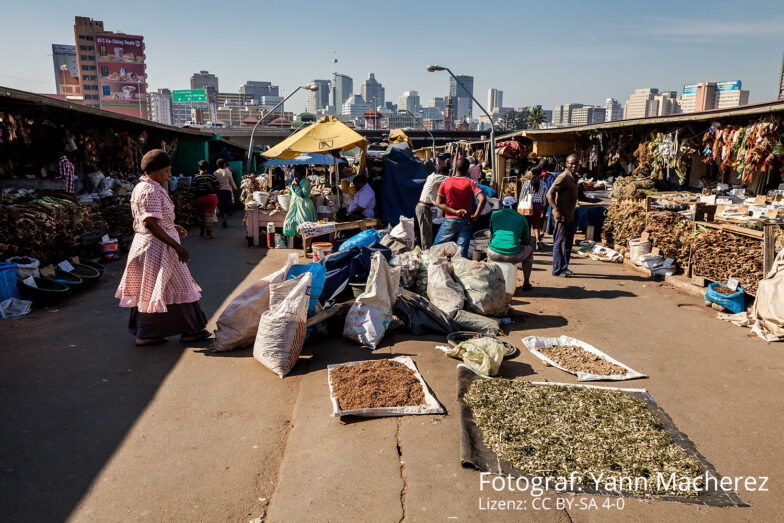Researchers from North-West University in South Africa have investigated which reptiles are used by traditional healers and how much they actually know about the species used. They visited six medical shops and markets (muthi shops/markets) in Polokwane, Pretoria, Johannesburg, Pietermaritzburg and Durban. Twelve traditional healers were also visited, two each in Limpopo and Gautend and seven in KwaZulu-Natal. Healers who agreed to be interviewed were asked about the species and origin of reptiles they use. Samples were taken for genetic testing from 111 carcasses and tissue remains (some only bones with meat remains) offered for sale.
Of the 34 reptile species known so far from the literature to have been traditionally used in South African medicine, nine could be confirmed. The healers reported that they partly hunted the reptiles themselves and partly bought them from specialised hunters. To the astonishment of the researchers, reptiles killed in road traffic (“roadkills”) were also used by healers. For sale and use, the reptiles were preserved. Fat and internal organs were removed manually. The fat was kept in bottles as it could be sold individually. The organs were not used further. The carcasses of the reptiles were then rubbed with ash and salt and dried in the sun. All healers agreed that whole carcasses were rarely sold – usually customers only wanted to purchase certain body parts, as only these were known for their effects.
The flap-necked chameleon was already known to be an occasional species at traditional South African healer markets. Several Chamaeleo dilepis were also identified in this study, but they were only marketed with an umbrella term in isiZulu. Unwabu refers to any species of chameleon, not specifically Chamaeleo dilepis. For other reptile species, some of the healers’ names matched the identified species down to the species level. However, there were also quite a few misidentified specimens where completely different reptiles were identified by the healers than turned out to be the case in the genetics.
Barcoding and traditional health practitioner perspectives are informative to monitor and conserve frogs and reptiles traded for traditional medicine in urban South Africa
Fortunate Phaka, Edward Netherlands, Maarten van Steenberge, Erik Verheyen, Gontran Sonet, Jean Hugé, Louis du Preez, Maarten Vanhove
Molecular Ecology Resources [Preprint], 2022
DOI: 10.22541/au.166487945.53921162/v1


